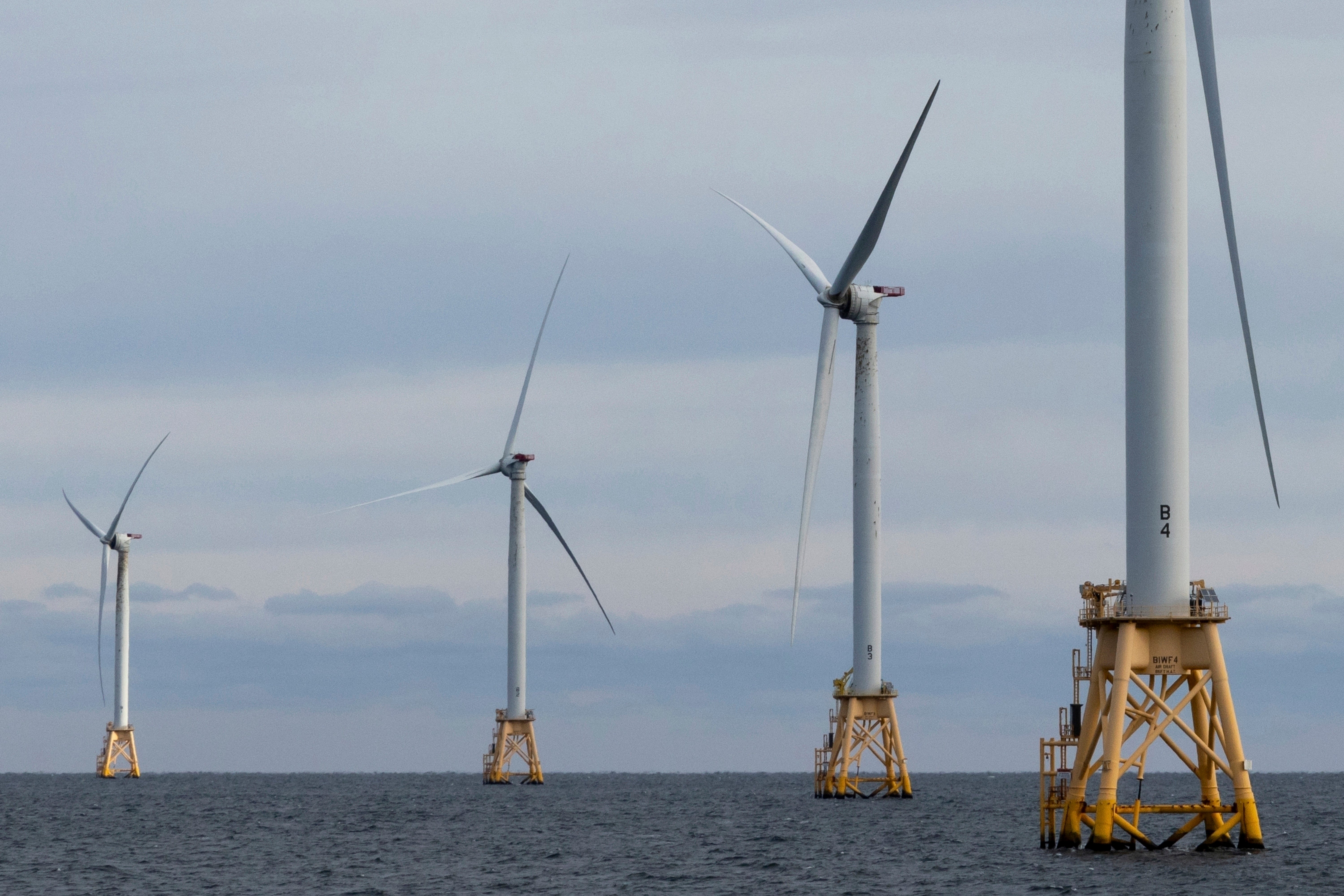Federal government grants first floating offshore wind power research lease to Maine
The federal government has issued the nation’s first floating offshore wind research lease to the state of Maine, comprising about 23 square miles in federal waters

Your support helps us to tell the story
From reproductive rights to climate change to Big Tech, The Independent is on the ground when the story is developing. Whether it's investigating the financials of Elon Musk's pro-Trump PAC or producing our latest documentary, 'The A Word', which shines a light on the American women fighting for reproductive rights, we know how important it is to parse out the facts from the messaging.
At such a critical moment in US history, we need reporters on the ground. Your donation allows us to keep sending journalists to speak to both sides of the story.
The Independent is trusted by Americans across the entire political spectrum. And unlike many other quality news outlets, we choose not to lock Americans out of our reporting and analysis with paywalls. We believe quality journalism should be available to everyone, paid for by those who can afford it.
Your support makes all the difference.The federal government issued on Monday the nation’s first floating offshore wind research lease to the state of Maine, comprising about 23 square miles (60 square kilometers) in federal waters.
The state requested the lease from the federal Bureau of Ocean Energy Management for a floating offshore wind research array with up to a dozen turbines capable of generating up to 144 megawatts of renewable energy in waters nearly 30 miles (48 kilometers) southeast of Portland, Maine.
The research array will use floating offshore wind platforms designed by the University of Maine and deployed by partner Diamond Offshore Wind. But construction is not likely for several years.
The research is key to growing the ocean wind energy industry in Maine.
Democratic Gov. Janet Mills signed a bill last year that aims to see Maine procure enough energy from offshore wind turbines to power about half its electric load by 2040, and the state has selected a site to build, stage and deploy the turbine equipment. In the next decade, University of Maine researchers envision turbine platforms floating in the ocean beyond the horizon, stretching more than 700 feet (210 meters) skyward and anchored with mooring lines.
“Clean energy from offshore wind offers an historic opportunity for Maine to create good-paying jobs, reduce our reliance on fossil fuels, and fight climate change by cutting greenhouse gas emissions,” Mills said.
The state requested the lease in 2021. The roughly 23 square miles (60 square kilometers) in the federal lease is larger than the state's request of about 15 square miles (39 square kilometers). It will allow the state, the fishing community, oceanography experts and the offshore wind industry to thoroughly evaluate the compatibility of floating offshore wind.
Floating turbines are the only way some states can capture offshore wind energy on a large scale. In the U.S. alone, 2.8 terawatts of wind energy potential blows over ocean waters too deep for traditional turbines that affix to the ocean floor, according to the National Renewable Energy Laboratory. That’s enough to power 350 million homes — more than double the number of existing homes in the U.S.
President Joe Biden has made offshore wind a key part of his plans for fighting climate change.
Since the start of his administration, the Department of the Interior has approved the nation’s first nine commercial scale offshore wind projects with a combined capacity of more than 13 gigawatts of clean energy — enough to power nearly 5 million homes.